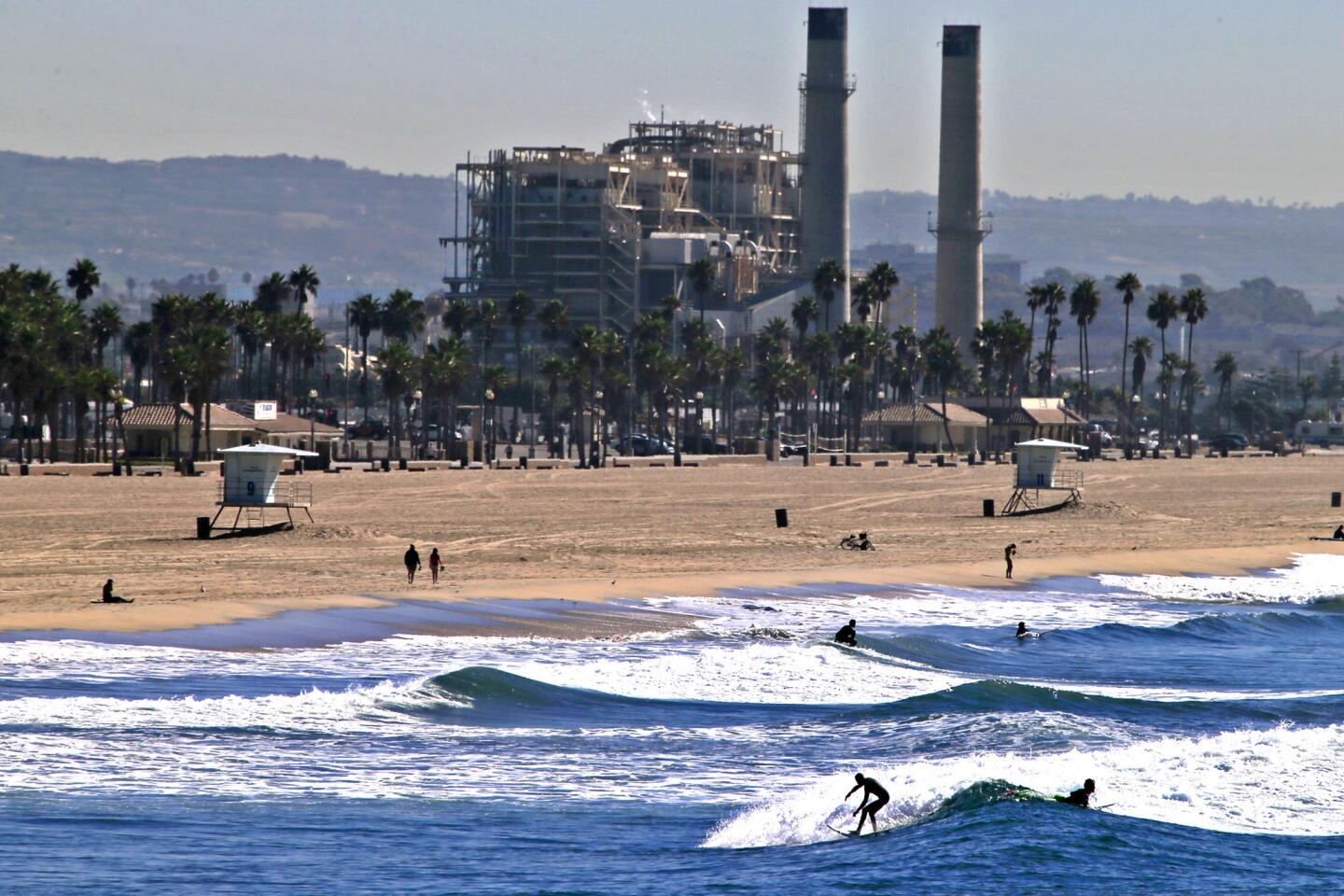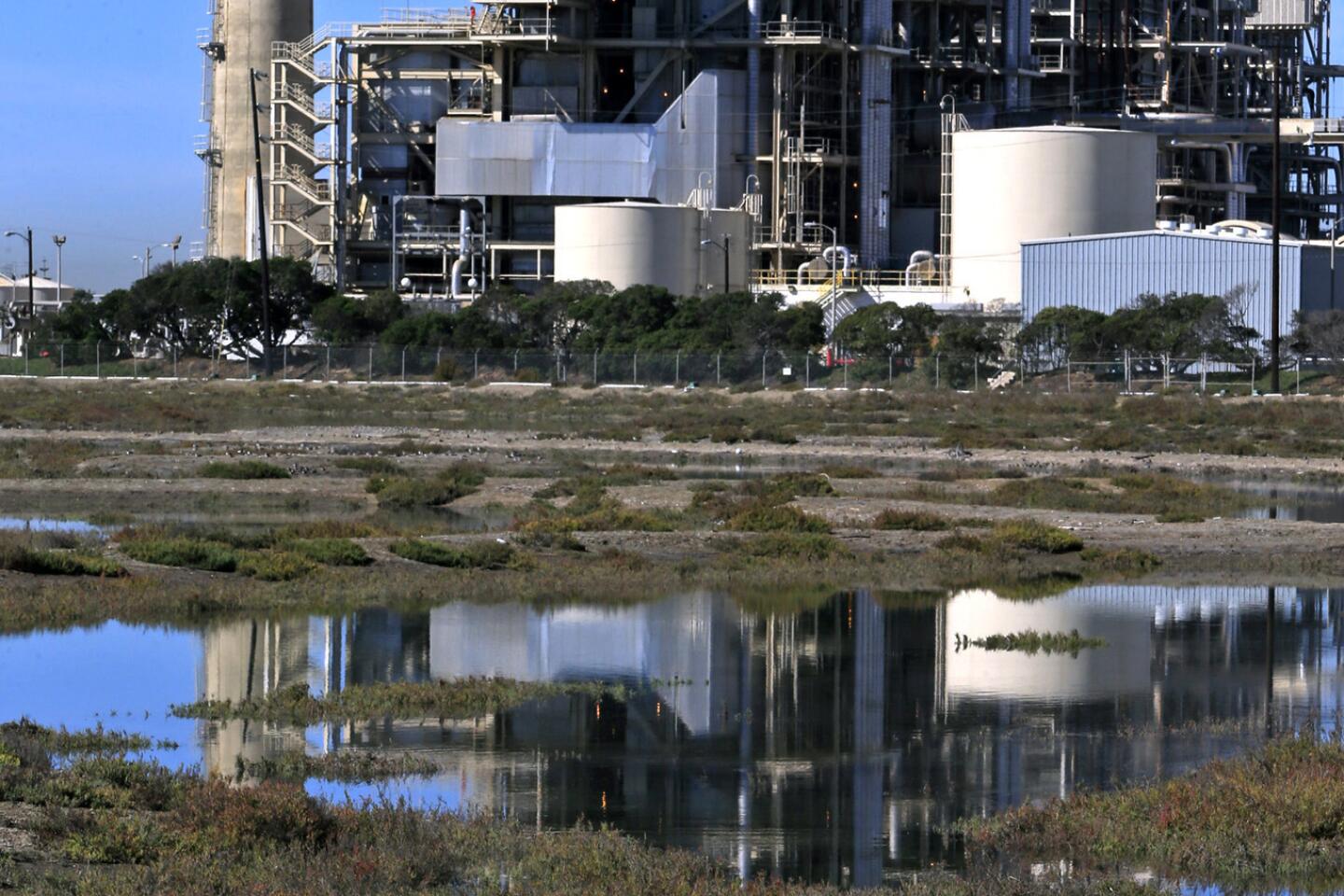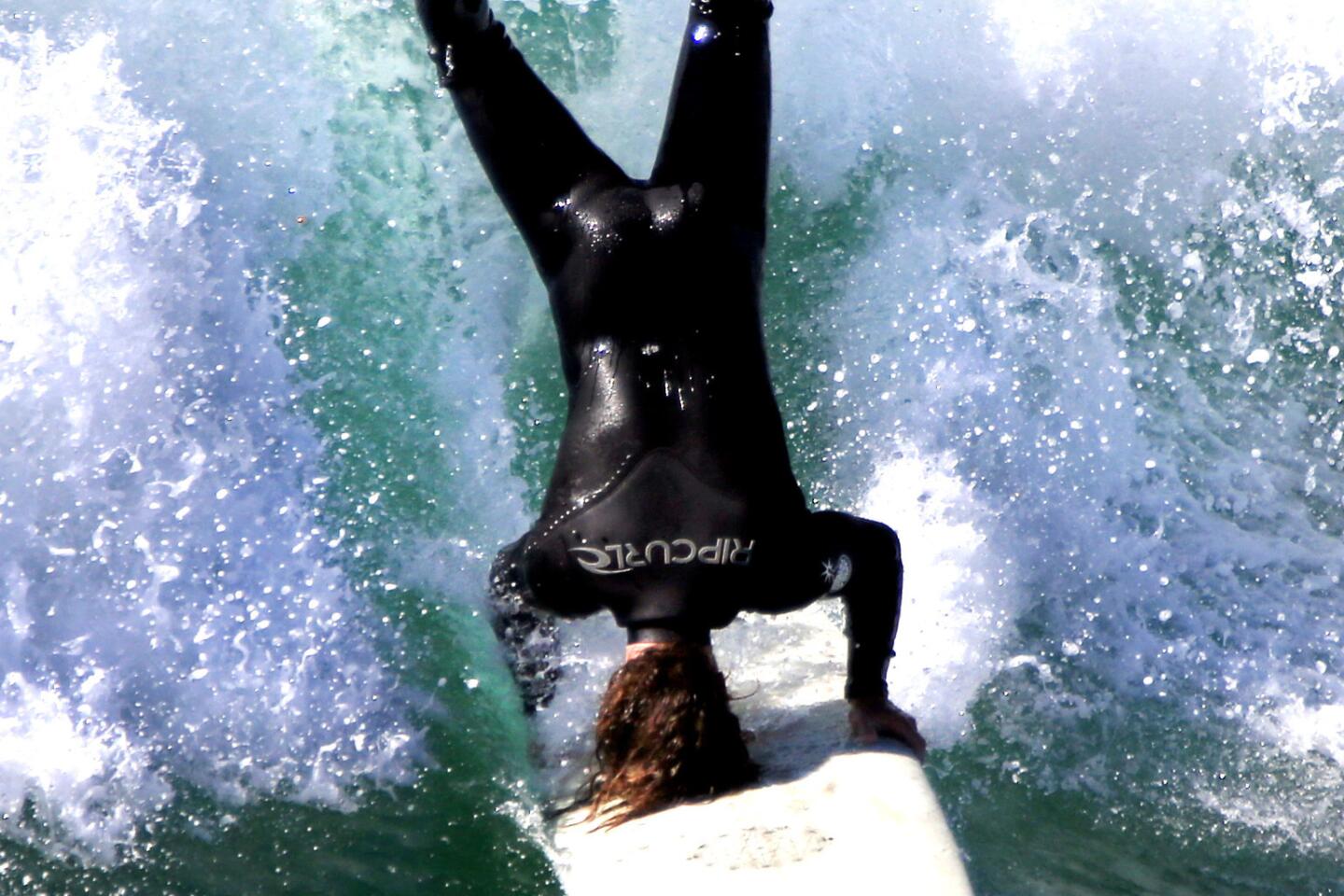Proposed desalination plant could harm ocean environment, report says
- Share via
A proposed seawater desalination plant in Huntington Beach could significantly harm parts of the Southern California ocean environment unless substantial changes are made in its design and operation, according to the staff of the state Coastal Commission.
A staff report prepared for this week’s commission vote on the project highlights the potential downside of large-scale efforts to turn the salty water of the Pacific Ocean into drinking supplies for coastal California.
“There are ways to do desal in a fairly environmentally benign way,” said Tom Luster, an environmental scientist with the commission. “This one will have some fairly significant adverse effects.”
Poseidon Resources, a small, privately held company based in Stamford, Conn., first proposed the Huntington Beach desalter, and a similar one now under construction in Carlsbad in San Diego County, in 1998. Both would be the largest seawater-to-drinking-water operations in the country, each producing enough purified water every year to supply roughly 100,000 households.
Poseidon intended to avoid the expense and environmental problems of building and operating ocean intake and discharge systems by locating its facilities next to power stations and tapping into the huge volumes of seawater used to cool the generating equipment.
But that strategy ran into hurdles in 2010 when the State Water Resources Control Board directed most coastal generating stations to phase out seawater cooling, which every year kills massive amounts of plankton at the bottom of the marine food web along with billions of fish eggs and larvae.
When the AES Huntington Beach Generating Station on Pacific Coast Highway switches to a different cooling system within the next five years, Poseidon’s proposed plant would continue using the power operation’s offshore outfall and open ocean intake pipe, pulling in about 127 million gallons of coastal water every day.
The commission staff estimates that would annually suck in more than 80 million fish larvae, eggs and invertebrates along 100 miles of the Southern California coast, including a number of Marine Protected Areas.
Poseidon could largely avoid such harm, the staff says, by constructing intakes, called infiltration galleries, just below the ocean floor that imperceptibly draw seawater through a few feet of sand into perforated pipes, keeping out the tiny organisms that form the foundation of marine life.
Company officials argue that infiltration galleries have been used only by much smaller desalination plants around the world and are unproven and prohibitively expensive for operations the size of Huntington Beach.
If the commission adopts the staff recommendations, it would kill the Huntington Beach project and set “a terrible precedent that would have a chilling effect on seawater desalination in California,” said Poseidon Vice President Scott Maloni.
Far from being environmentally benign, he said subsurface intakes would require the excavation of more than 60 acres of seabed as well as the installation of beach pumping equipment, and would use more energy than an open ocean intake.
The commission staff also says Poseidon needs to cut salinity levels of the brine that is left over from the desalting process and dumped back into the ocean. Poseidon intends to dilute the hyper-saline brine with a portion of the intake water. But the staff contends the diluted discharge would still be salty enough to hurt marine life.
To offset the environmental effects of the Huntington Beach operation, Poseidon proposes to restore about 12 acres of coastal wetlands, an amount the commission staff insists is insufficient.
The company is restoring 55 acres of marine wetlands to compensate for the Carlsbad plant, which will use more seawater than Huntington Beach and will continue to draw directly from the Pacific after the neighboring power station converts to a new cooling system.
The commission didn’t require subsurface intakes in Carlsbad, Luster said, because they would destroy important rocky reef and hard-bottom habitat not found along the Huntington Beach shore.
The outcome of Poseidon’s showdown with the influential Coastal Commission staff is likely to set the bar for future desalination projects, a number of which are being considered up and down California.
“This is how the commission communicates how a proposal for a desalination plant will get approved,” said Susan Jordan, director of the California Coastal Protection Network, one of nine conservation groups that have urged the commission to reject the Huntington Beach proposal as it now stands.
Three years ago, the Huntington Beach City Council approved the land-based portion of the project. But most members of a new council elected in 2012 oppose the proposal. “The majority of the council would like to see this project stopped for a whole host of reasons,” said Mayor Connie Boardman.
She cited the environmental effects and also questioned the need for the project, which would produce some of the most expensive drinking supplies in the state. “Why would anyone buy their water?” Boardman asked.
Although the Orange County Water District supports the desalter, Poseidon has yet to sign up any firm customers for the Huntington Beach project.
Cost is a leading reason why most experts don’t expect seawater desalination to play more than a relatively small role in California’s future water supply. The reverse osmosis process commonly employed to purify ocean water requires a great deal of energy, driving up the cost, and expensive distribution systems must be constructed to carry supplies inland.
It was easier for Poseidon to line up customers for the Carlsbad operation because San Diego County is at the end of the line for Northern California water and it lacks the groundwater supplies that Orange County enjoys.
Boxall writes for the Los Angeles Times.


